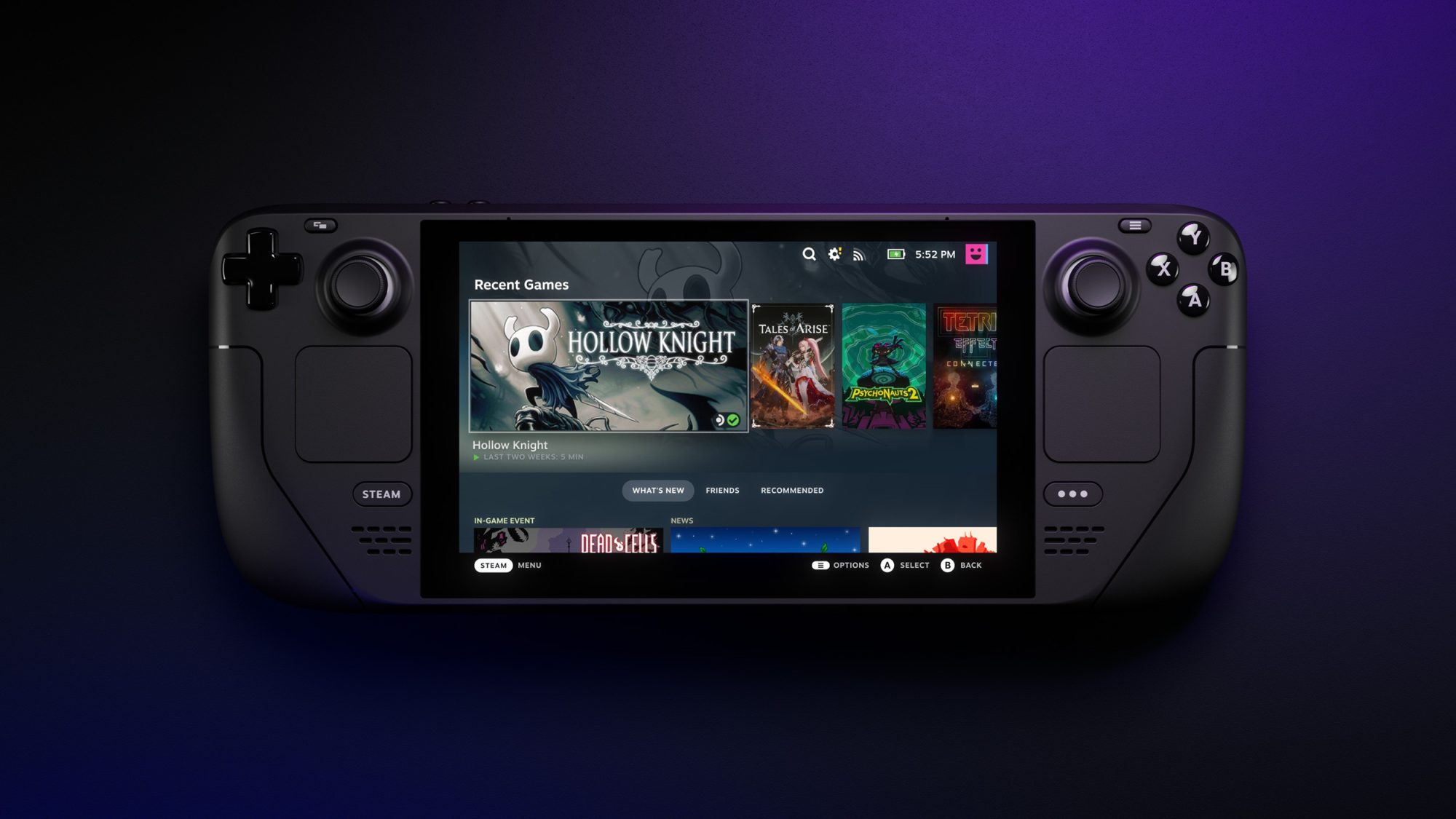Steam Deck Review
Notes
When the Steam Deck was first announced, I set a reminder for the opening date of the preorders. Somehow I missed the reminder and it was a couple of days before I realised and went back to pre-order one. I'd missed the opening by two days, which caused an expected shipping delay of about 9 months. It was extremely popular and they weren't making nearly enough to satisfy demand. I forgot about it for a while and received an invitation to order in Spring in 2022. It had an expected delivery date of October 2022, so I cancelled the order. The only reason I'd really wanted one was for all the travelling we were going to be doing over summer 2022 so I put it on the backburner.
Fast forward to 2023 and I was still interested in picking one up. We do have a Switch, but honestly it's been nothing but underwhelming. We got it for Breath of the Wild, which was great - but since then it's basically just been for Nintendo exclusives, which are always overpriced and never go on sale. Anything that comes out now I just feel like the Switch is so far behind in processing power that it's a disappointment every time I turn it on. It even struggles to run the simplistic graphics of the Link's Awakening remake (which was also €60). I also dislike having to buy any game I want to play twice, because I normally either already own it on Steam, or would also want to play it on desktop.
So, I went ahead and ordered a Deck for this year's travelling. It arrived within a week (supply has caught up with demand) and I was immediately impressed... right up until I realised that the left joystick didn't work properly and had to send it back. It seems like the QA is not great, and it can be a bit hit and miss whether you get one that has any issues. To Steam's credit, I filed a report and received a reply within 5 minutes with an RMA number. I decided it wasn't worth hanging around for them to repair it, so I sent that one to the repair center, refunded it and bought a new one which was quicker than waiting for the RMA process. One more week later, the Deck arrived again and this one had no issues at all. Success!
The whole point of this site is to keep things short and digestible. That was a long intro, so here's the Pros and Cons list that you're used to.

Pros
Easy to set up
From when you switch it on, the set up process is really straightforward. Since Valve recently updated the sign-in process for Steam, all I had to do was scan the QR code on my Deck and login via my phone. There's also a quick guide to show you around the UI, as there are a TON of things you can fiddle with.
Performance
Considering the form factor of the device, I've been extremely impressed with how well it runs things. While I still prefer to use it primarily for playing simple graphics games (I do have a gaming PC), it's great that it is physically capable of running the more intensive games at respectable frame rates.
Desktop Mode
One of the things you can fiddle with (although I don't really want to) is that you can actually get to a Linux desktop. You can run a real OS inside your Steam Deck, plug in a mouse, keyboard and monitor, and use it like a laptop.
Wireless Controllers
I own a Switch Pro controller and an Xbox Elite Wireless Controller Series 2. Normally I've used these plugged into the PC with a cable (until recently, they didn't work properly wirelessly). Both of these can connect to the Deck either via Bluetooth, or with a cable if you use the Dock.
Cloud Save
Just like Steam, your save games are stored in the cloud. While this is a minor convenience on PC, it's invaluable on the Deck. Play on the move, get home, continue on your PC right where you left off.
Supports other platforms
While I don't intend to use this functionality, it is actually possible to play non-Steam games on the Deck. You can install battle.net, non-DRM games, Ubisoft, you name it. You can also run normal applications on the desktop like Chrome and Netflix.
Bluetooth
When we first got the Switch, this wasn't available and I was disappointed. It's since been patched in, but the Deck supports all bluetooth devices as peripherals. For me this means wireless AirPod Pros for noise-cancelling sound, wireless controllers, and you can use bluetooth keyboards and mice too.
Feels great
Assuming you get a Deck that didn't have any QA issues - the build quality feels really nice. It's not super heavy, the screen is beautiful, and the controls are solid. There's also two trackpads on it in addition to all the normal controller buttons.
Dock
The first thing I did was get a Dock from Valve. The Dock has 3 USB ports for peripherals, ethernet, HDMI, DisplayPort and USB-C (for power input). This has been particularly useful over the last week or so when it's been really hot and I've tried to avoid having my desktop PC on. I've been using the Deck as my primary gaming device to keep the temperature of the room down.
Sleep
Like you're used to with iPads and the Switch, just hit the power button and the device goes to sleep. No need to save your game, boot up and continue where you left off later.
Mobile Steam Library
This is the single biggest advantage of the Deck for me - I already own hundreds of games on Steam, and I don't have to buy any of them again to play them on the go.
Performance Controls
The Deck gives you a lot of control over performance settings. You can limit the FPS, use thermal throttling, change the refresh rate, change the GPU clock speed, all globally or per-game profiles. You can also use various levels of performance overlays to see statistics in-game.
Network transfer
If you've already got a game installed on your PC, Steam can transfer the files across your internal network to the Deck instead of downloading it again.
Versatility
This was one of the most impressive things for me. The Deck can be used in a number of ways:
- You can play it as a standalone hand-held device
- You can use it as a controller for a Steam game being played on your desktop PC
- You can run the game on your desktop PC, but stream the output to your Deck, using the Deck as a controlled, so you can play AAA games on the handheld at full graphics with no processing needed on the Deck
Cons
- My AirPods, connected via bluetooth, have to be reconnected whenever I start a different game
- The first time I used the Dock, it wouldn't work until the software was updated. It wouldn't update the software until I plugged the Deck in to it WITHOUT external power. I had to get that tip from Reddit, and found it very counter-intuitive
- Similarly, there's an intermittent hardware bug where it doesn't output to an external screen if the Deck is plugged into power when you connect the screen. You have to have the Deck on, docked, connected to the monitor first, then connect the power to the Dock. Otherwise it doesn't output the signal correctly. Similarly, it only works on our TV on HDMI Input 2, not the main HDMI input
- Getting screenshots off the Deck on to my PC computer is huge pain. You have to upload each screenshot INDIVIDUALLY (Select the screenshot > Open > Options > Upload > Make Private > Confirm) to get them into the Steam cloud, then on your desktop - go to the uploaded images, select each one, copy the image, paste it into an image editor and save each one.
- Doesn't always accurately track game time. For example, it says "18.7 hours" for Ender Lilies, but the in-game save screen says 23 hours.
